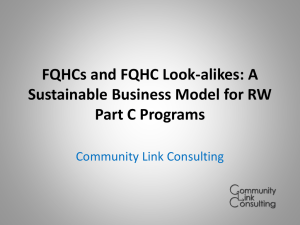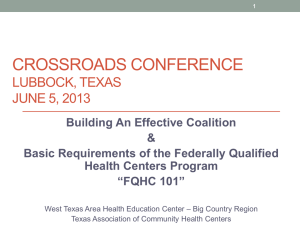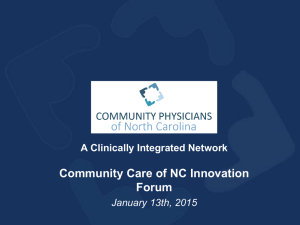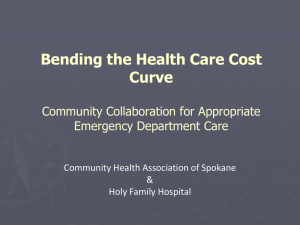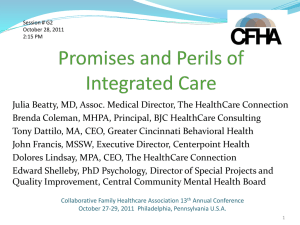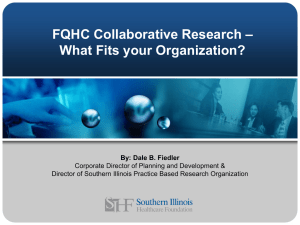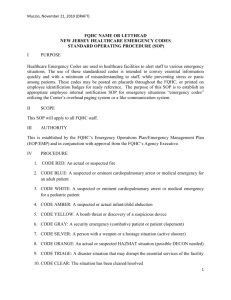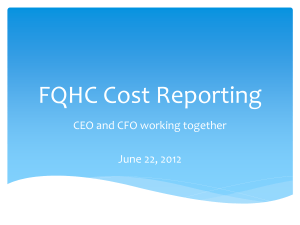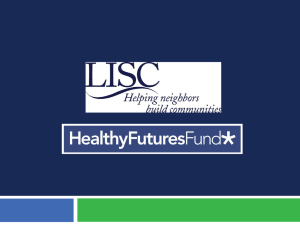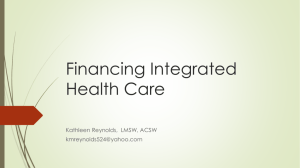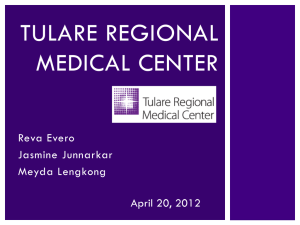A Sustainable Business Model for RW Part C
advertisement
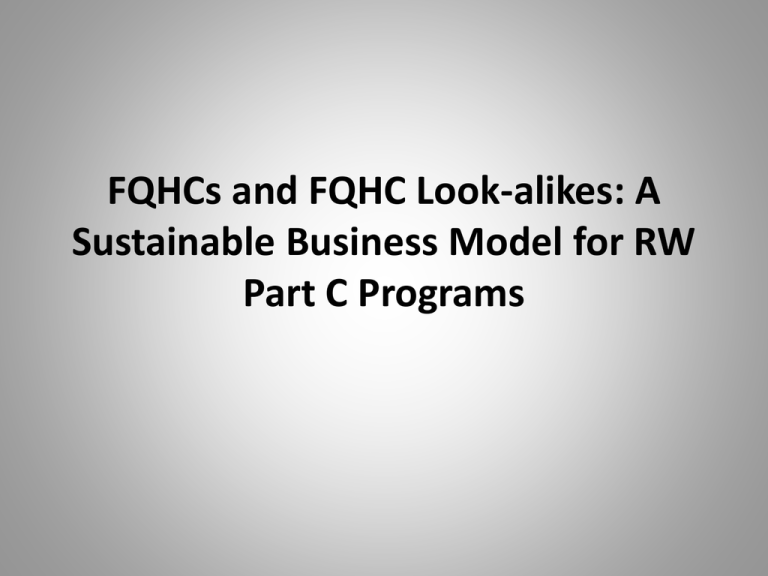
FQHCs and FQHC Look-alikes: A Sustainable Business Model for RW Part C Programs Presenters: Rebecca M. Johnson, MNPL Mark Meye, CPA Community Link Consulting Your knowledgeable resource in all things FQHC www.communitylinkconsulting.org New Access Point, Service Area Competition Budget Period Renewal Ryan White Grants & Program Support FQHC and Look-alike Grantee Support & Services Financial Management Cost Reporting, UDS, FFR Fee Schedule Review Corporate Compliance / Compliance Reporting Management / Staff / Board Training Strategic Planning Residency Development IT Infrastructure Development and Support Who’s in the room? Why now? Affordable Care Act RW Reauthorization Uncertainty Changes in HIV Disease Objectives: By the end of the presentation you will: •Understand the benefits of becoming an FQHC or FQHC LA •Know how the programs differ •Know which model best supports your program •Have basic information to begin strategic discussions about becoming an FQHC/FQHC-LA •Have a road map for pursuing FQHC/LA status Federally Qualified Health Center’s Mission Improve the health of underserved communities and vulnerable populations by assuring access to comprehensive, culturally competent, quality primary health care services Ultimate Goal… Improving health status (i.e., patient outcomes) of all populations in the target area served by a health center, especially underserved. PIN-96-23 Four Core Elements FQHC or FQHC – Look alike 1. Reach Medically Underserved Communities Impact: CHCs serve populations who otherwise would not get the care they need; CHCs see publicly insured and uninsured patients in areas where there is a lack of providers and/or providers willing to see this population. 2. Governing with Community Involvement Impact: CHCs reflect the needs of the communities they serve. 3. Treat Patients Regardless of Ability to Pay Impact: Community Health Centers (CHCs) are the primary care safety net for the uninsured. 4. Provide a Comprehensive Scope of Services Impact: No other model of primary health care service delivery offers more services in one location or targets more special populations through one model of care. » Reduce/eliminate health disparities. » Help vulnerable patients successfully manage chronic conditions. » Save money in the health care delivery system by keeping patients out of the hospital and ER. Program Benefits – FQHC Only •Grant Funding for Operations under Section 330 of the Public Health Services Act -- $650,000 for New Access Point • FTCA – Federal Tort Claims Act Coverage Additional Program Benefits National Service Corps Enhanced Medicaid/Medicare Rates 340 B Pharmacy Access Program Requirements: •Comprehensive primary care (directly or contract) •After hours care •Wrap around “enabling” services •Robust QI Program System Requirements: •Ability to bill third party payors •Medicaid and Medicare electronic billing •Financial management policies/procedures Shared Compliance Requirements: •Annual Uniform Data Set (UDS) Report (similar to RDR/RSR) •Grant Cycles (similar to Part C) •Cost Reports •Financial Audit (A-133) Financial Model Revenue Expense Net Expense SF424A Personnel Fringe Travel Supplies Equipment Contractual Other Personnel Typically 80% Buckets (i.e., programs) Staffing Ratio Expectations Revenue Non-Program Revenue Grants Contracts Donations/Fundraising Other (interest, meaningful use) Program Income Program Income Enhanced Reimbursement Rates Access to Prospective Payment System wrap payment for Medicaid Cost-based reimbursement for Medicaid and Medicare Medicaid Rate Setting Year Medicaid – not intuitive Impact – long term and potentially detrimental 340B Pharmacy Discount drug pricing program requires drug manufacturers to provide outpatient drugs to covered entities at a reduced price Benefits of 340B Program Reported savings that range between 25-50% for covered outpatient drugs as a result of the low 340B prices Reduces the price of medications for patients Expands the number of drugs on formularies Increases the number of indigent patients served Expands other services offered to patients by the entity – flexible “profit” – unlike RW Simplified Grant Accounting Typically tied to payroll No Double Dipping - Charge only one grant Applying for FQHC Grants Needs Assessment Services – Required and Optional Business Plan Governance Rebecca M. Johnson, MNPL Health Center Solutions, Inc. 360-319-1429 Rebecca@healthcentersoluitons.com Mark Meye, CPA
